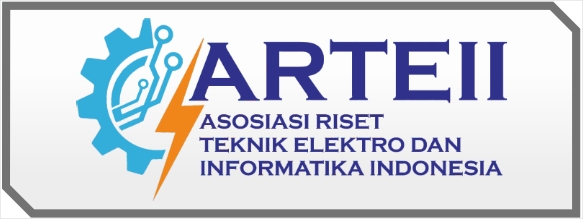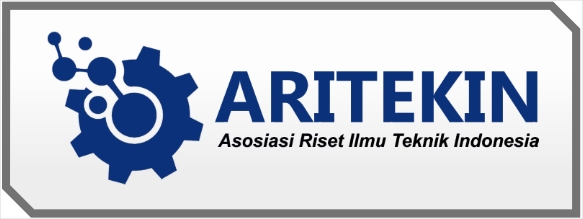Analysis Of Working Environment And Career Development By Comparing Employee Engagement To Self Determination As Intervening Factors
(Study Of Millennial Employee Of Headquarters Of PT Jaminan Kredit Indonesia)
DOI:
https://doi.org/10.59581/jusiik-widyakarya.v2i1.2817Keywords:
Work Engagement, Work Environment, Career Development, Self-Determination, Millennial EmployeesAbstract
This study examines the work engagement of millennial employees at PT Jamkrindo in 2022. The work engagement level at PT Jamkrindo is reported to be high and has shown an improvement compared to the previous year. However, there are key areas that need to be the company's top priority, namely providing an adequate work environment and ensuring certainty in employee career development. Self-determination acts as a mediation factor, allowing the research to explore and understand the internal processes that occur in the minds and emotions of individuals. How individuals respond to and interpret the work environment and career development personally can explain why and how work engagement is formed, involving psychological factors such as individual goals, values, and self-perceptions. Based on the research findings, the work environment at PT Jamkrindo has a significant impact on the level of work engagement. Similarly, career development at PT Jamkrindo also significantly influences the level of work engagement. The work environment at PT Jamkrindo has a significant impact on the level of work engagement through self-determination as a mediating factor. However, career development at PT Jamkrindo does not have a significant impact on work engagement through self-determination. There is potential for further in-depth research, including a deeper understanding of specific factors in the work environment and career development programs that have the most significant impact on millennial employees.
References
Adhari, I. Z. (2021). Optimalisasi kinerja karyawan menggunakan pendekatan knowledge management & motivasi kerja (Vol. 1). CV. Penerbit Qiara Media.
Aristiyani, A., Nurdin, M. C. I., Assa, M. M. V., Sugiarti, L. R., & Suhariadi, F. (2023). Pengaruh Work Life Balance, Perceived Organizational Support Terhadap Keterlekatan Kerja melalui Kepuasan Kerja sebagai Variabel Intervening pada Anggota Instansi X. Jurnal Cahaya Mandalika ISSN 2721-4796 (Online), 4(3), 1188–1199.
Ayuni, E., & Etikariena, A. (2020). Bagaimana Persepsi Dukungan Organisasi dan Perilaku Kerja Inovatif Saling Terkait? Peran Mediasi Keterlekatan Kerja. Jurnal Psikogenesis, 8(1), 30–44.
Caroline, E. (2019). Metode Kuantitatif. Media Sahabat Cendekia.
Halisa, N. N. (2020). Peran Manajemen Sumber Daya Manusia" Sistem Rekrutmen, Seleksi, Kompetensi dan Pelatihan" Terhadap Keunggulan Kompetitif: Literature Review. ADI Bisnis Digital Interdisiplin Jurnal, 1(2 Desember), 14–22.
Kusumastuti, A., Khoiron, A. M., & Achmadi, T. A. (2020). Metode penelitian kuantitatif. Deepublish.
Lockwood, N. R. (2007). Leveraging Keterlekatan kerjas for Competitive Advantage: HRs Strategic Role. HR Magazine, 53(2), 1–11.
Macey, W. H., & Schneider, B. (2008). Arti Keterlekatan Kerja. Jurnal Psikologi Industri Dan Organisasi: Perspektif Sains Dan Praktek, 1, 3–30.
Markos, S., & Sridevi, M. S. (2010). Keterlekatan Kerja: The Key to Improving Performance. International Journal of Business and Management, 5, 89–96.
Memon, M. A., Ramayah, T., Cheah, J.-H., Ting, H., Chuah, F., & Cham, T. H. (2021). PLS-SEM statistical programs: a review. Journal of Applied Structural Equation Modeling, 5(1), 1–14.
Murti, R. A., & Mutmainah, H. (2022). Pengaruh Motivasi, Kompetensi, Disiplin Kerja Dan Lingkungan Kerja Terhadap Kinerja Karyawan Bidang Pendapatan Di Badan Pengelolaan Keuangan Dan Aset Daerah Kota Surakarta. Jurnal Manajemen Dan Bisnis Sriwijaya, 20(2), 57–68.
Robinson, D., Perryman, S., & Hayday, S. (2004). Penggerak Keterlekatan Kerja. Institut Studi Ketenagakerjaan.
Sarstedt, M., Radomir, L., Moisescu, O. I., & Ringle, C. M. (2022). Latent class analysis in PLS-SEM: A review and recommendations for future applications. Journal of Business Research, 138, 398–407.
Schaufeli, W. B., & Bakker, A. B. (2007). Defining And Measuring Work Engagement: Bringing Clarity To The Concept. In A. B. Bakker (Ed.) & M. P. Leiter, Work engagement: A handbook of essential theory and research. Psychology Press.
Sholihin, M., & Ratmono, D. (2021). Analisis SEM-PLS dengan WarpPLS 7.0 untuk hubungan nonlinier dalam penelitian sosial dan bisnis. Penerbit Andi.
Simatupang, F. (2021). Pengaruh Kepemimpinan Transformasional dan Disiplin Kerja terhadap Kinerja Pegawai melalui Motivasi Kerja sebagai Variabel Intervening pada Badan Kepegawaian Daerah Kabupaten Tapanuli Tengah. Judicious, 2(1), 11–21.
Utamy, R., Ahmad, S., & Eddy, S. (2020). Implementasi Manajemen Sumber Daya Manusia. Journal of Education Research, 1(3), 225–236.
Widodo, D. S., & Yandi, A. (2022). Model kinerja karyawan: kompetensi, kompensasi dan motivasi,(Literature Review MSDM). Jurnal Ilmu Multidisplin, 1(1), 1–14.
Downloads
Published
How to Cite
Issue
Section
License
Copyright (c) 2023 Tenri Angke Riliandra

This work is licensed under a Creative Commons Attribution-ShareAlike 4.0 International License.













